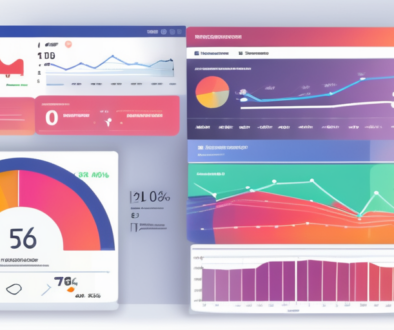Measuring the ROI of Marketing
Framing the Discussion
Whenever I talk to business owners about their marketing, they want to know about ROI. This is an absolutely fair question as the whole point of marketing is ultimately to grow your business and help you sell more products and make more money.
But in order to really understand ROI, I think we need to take a few steps back and look at how ROI is really measured.

First, your return on investment is a function of net income and assets managed. Fortunately, very few marketers are ever put in charge of managing assets, so we won’t worry about that. However, what marketing can and should impact is the net income.
Net Income
The calculation for net income is then pretty simple. We need the unit margin (how much we make on each individual unit) times the unit volume (how much of each unit we sell).
For example, let’s say your company makes widgets. For each widget you sell, you make $10. It’s then pretty simple to calculate how much profit you would make at any number of sales levels.
If we sell 1000 widgets: $10 x 1000 widgets = $10,000
If we sell 50,000 widgets: $10 x 50,000 widgets = $500,000
And so on….
Unit Margins
Now that we know how to calculate net income, let’s back up and take a look at how we calculate the inputs from unit margins. Unit margin is simply the selling price of a unit minus its cost.
For example, if we make a widget that sells for $20 and it costs us $10 to make, we’ll earn $10 on every sale.
$20 – $10 = $10 per unit margin
This is pretty straight forward and pretty fundamental business knowledge, but I wanted to list it here so that we’re all on the same page.
Unit Volume
Finally, unit volume is a function if market share and market size.
For example, if the entire market for widgets is 1,000,000 units, we would then need to know how much market share we had. Let’s say our company has 50% of the entire market. That means we can expect to sell 500,000 widgets.
1,000,000 x 50% = 500,000 units
And this relates to marketing how?
Now that we’ve broken down the simple calculations, let me give a few examples on how this all relates to marketing.

In marketing, we have the ability to influence all four categories in the last column. Here are some examples.
Product Positioning:
When planning your product positioning, you have an amazing opportunity to adjust the price to position your product within a niche. You have the opportunity to be the luxury provider or the low-cost provider – or find a niche anywhere in between.
Furthermore, if you can brand the product as something that is significantly better than competitors, you can charge a premium. Major brands do this all the time. Many name-brand food products (pastas, breads, soups, etc.) aren’t really that much better than the generic brands, they just have a loyal following and strong brand. This allows them to charge more. For them, branding is impacting pricing.
Cost:
Generally, this is the category marketers have the least control over. However, marketers can influence the customer acquisition cost. By finding and optimizing the best marketing channels, marketers can reduce the cost it takes to acquire one new customer, thereby effectively reducing the cost of the product.
Market Share:
Everyday there are competitors in the marketplace that are trying to get more market share from you. Every percentage point they take from you puts them just a little bit closer to catching or overtaking you.
Traditionally, advertising has focused on driving market share. By creating a brand, trust, and aura around your product, you are trying to capture more market share. Some brands like to try to capture market share by reducing costs and becoming a low cost provider over the short or long term.
As marketers, are strategies should virtually always entail a focus on capturing market share from the competitors. They are constantly trying to do the same to us.
Market Size:
Occasionally, we can impact the market size. By making people aware of and creating a desire for our product, we can actually increase the total people who will buy the product in the marketplace.
The cell phone is a great example of this. For years, the cell phone market was constantly expanding. Motorola, Apple, Nokia and many other brands were vying for a percent of the market share, but the market size was constantly growing.
As marketers, finding new niche markets to introduce our products can help us build the market share. Who else uses your product that is outside of your mainstream target audience? How can you reach other people like them?
Influencing ROI:
Ultimately, as marketers, our focus should be on setting price, reducing cost, growing market share while also growing the market size. The more we can control and influence these four categories for our businesses, the more we’ll be able to ultimately drive a better return on our investment.


